This straightforward pizza dough recipe is perfect for beginners, yielding an exceptionally soft and flexible pizza crust. With just four basic ingredients, you can effortlessly whip up a homemade pizza that surpasses delivery any time! Whether you're craving a classic Margherita or feeling adventurous with toppings, this versatile dough will be the perfect canvas for your culinary creations. Say goodbye to store-bought crusts and hello to the satisfaction of crafting your own delicious pizza from scratch.
Category
Entree
Cuisine
American
Servings
6
Prep Time
15 minutes
Cook Time
35 minutes
Calories
306
Join Chef Tom as he guides you through mastering the art of crafting the perfect pizza dough! In this simple yet informative tutorial, you'll uncover essential tips and techniques needed to create delicious crust using just four basic ingredients: flour, water, salt, and yeast. Whether you're a novice or seasoned home chef, Chef Tom's expertise will empower you to create homemade pizza dough that rivals your favorite pizzeria's. Get ready to elevate your pizza game and impress friends and family with your newfound dough-making skills!
Ingredients
- 325 g (1 cup 7 tbsp) warm water (110°F)
-
5 g (1 1/2 tsp) dry active yeast
-
500 g (3 1/4 cup) Antimo Caputo “00” Pizza Flour
-
10 g (1 tbsp) Jacobsen Salt Co. Pure Kosher Sea Salt
Directions
Begin by pouring the warm water into the bowl of a stand mixer. Sprinkle the yeast evenly over the water, ensuring it is fully submerged. Give it a gentle stir to combine, then allow the mixture to sit undisturbed for about 5 minutes. During this time, the yeast will activate and begin to foam, indicating that it is ready to be incorporated into the dough. This step is crucial for ensuring that your pizza dough rises properly and develops the desired texture and flavor. So, take a moment to let the yeast work its magic before moving on to the next steps in crafting your perfect pizza dough.
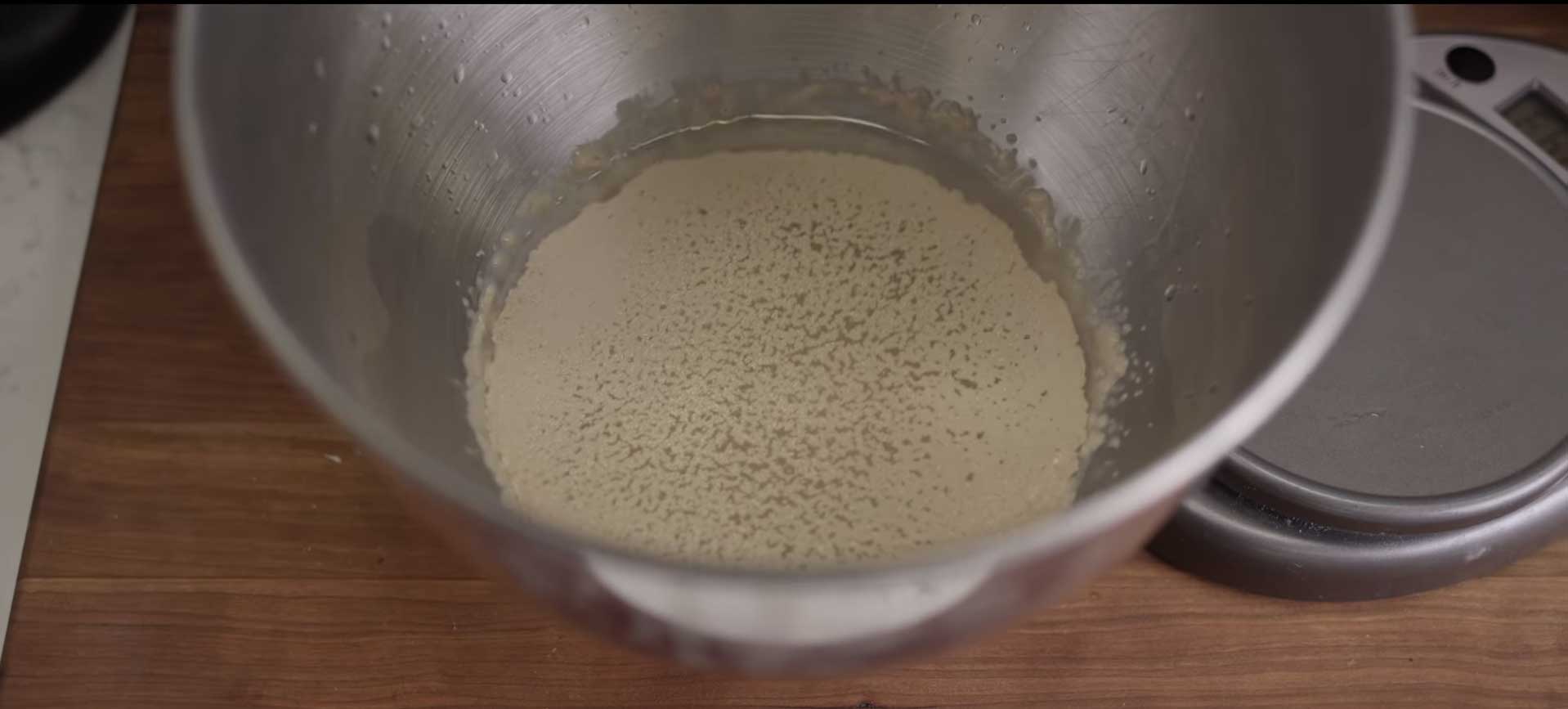
Once the yeast has activated and the mixture is foamy, it's time to add the Antimo Caputo "00" Pizza Flour to the bowl of the stand mixer. Carefully pour the flour into the bowl, ensuring even distribution over the yeast mixture. Next, add the Jacobsen Salt Co. Pure Kosher Sea Salt to the bowl. Sprinkle the salt evenly over the flour, as it will help enhance the flavor of the dough.
Adding the flour and salt at this stage allows them to evenly incorporate into the dough as it mixes, ensuring a consistent texture and flavor throughout. With these high-quality ingredients, you're on your way to crafting a pizza dough that's not only delicious but also authentic and satisfying.
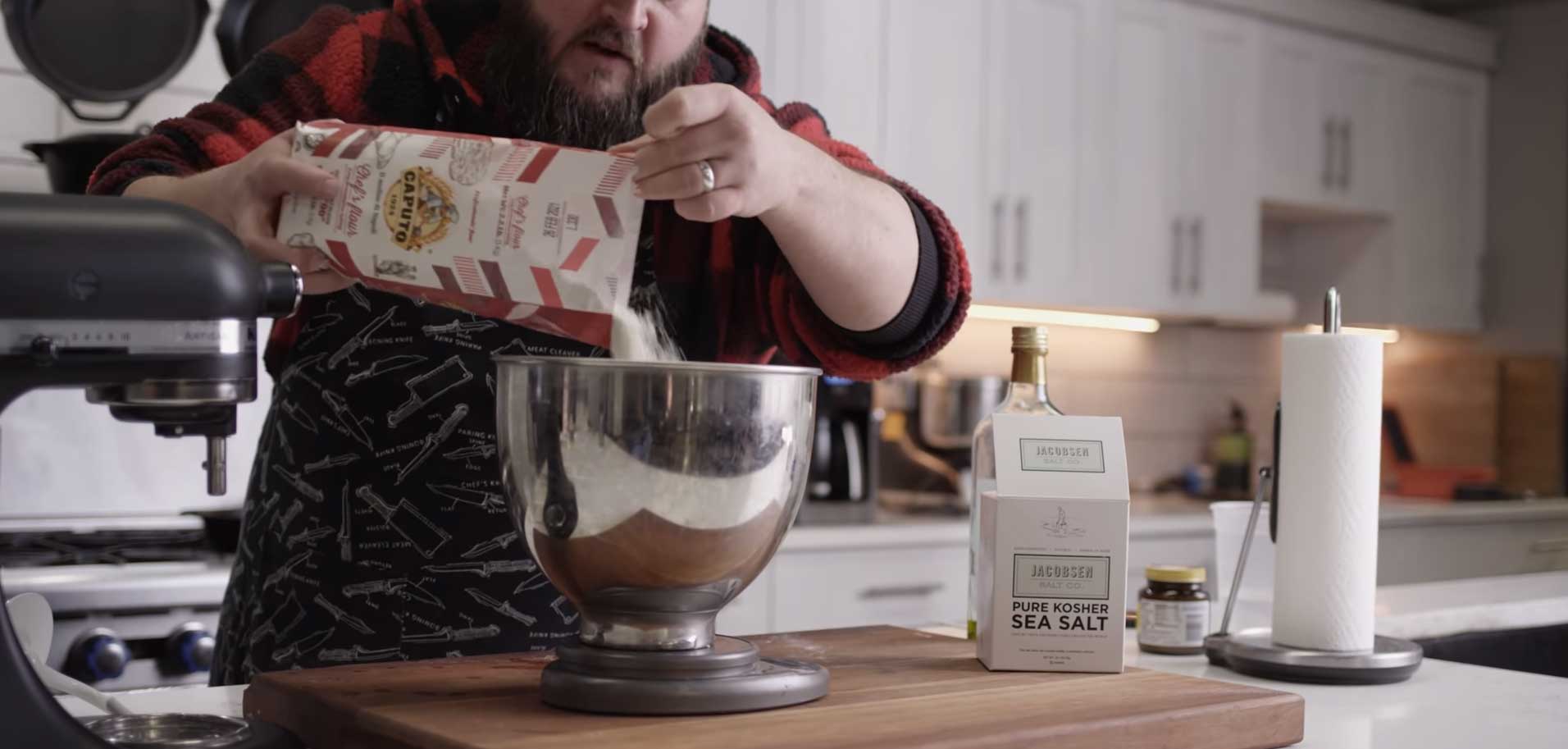
With the mixer fitted with the hook attachment, begin mixing the ingredients on medium-low speed (approximately the 2nd gear on a KitchenAid Stand Mixer). Allow the mixer to run until a cohesive ball of dough starts to form, which should take about 1 minute. Once all the ingredients are fully incorporated and the dough has come together into a ball, increase the speed slightly and continue mixing for a total of 8 minutes.
This extended mixing time helps develop the gluten in the dough, resulting in a more elastic and stretchy texture, which is essential for achieving the perfect pizza crust. Be sure to monitor the mixing process and adjust the speed as needed to maintain a consistent and smooth dough. After the 8 minutes of mixing, your pizza dough should be smooth, elastic, and ready to be shaped and rested before baking.
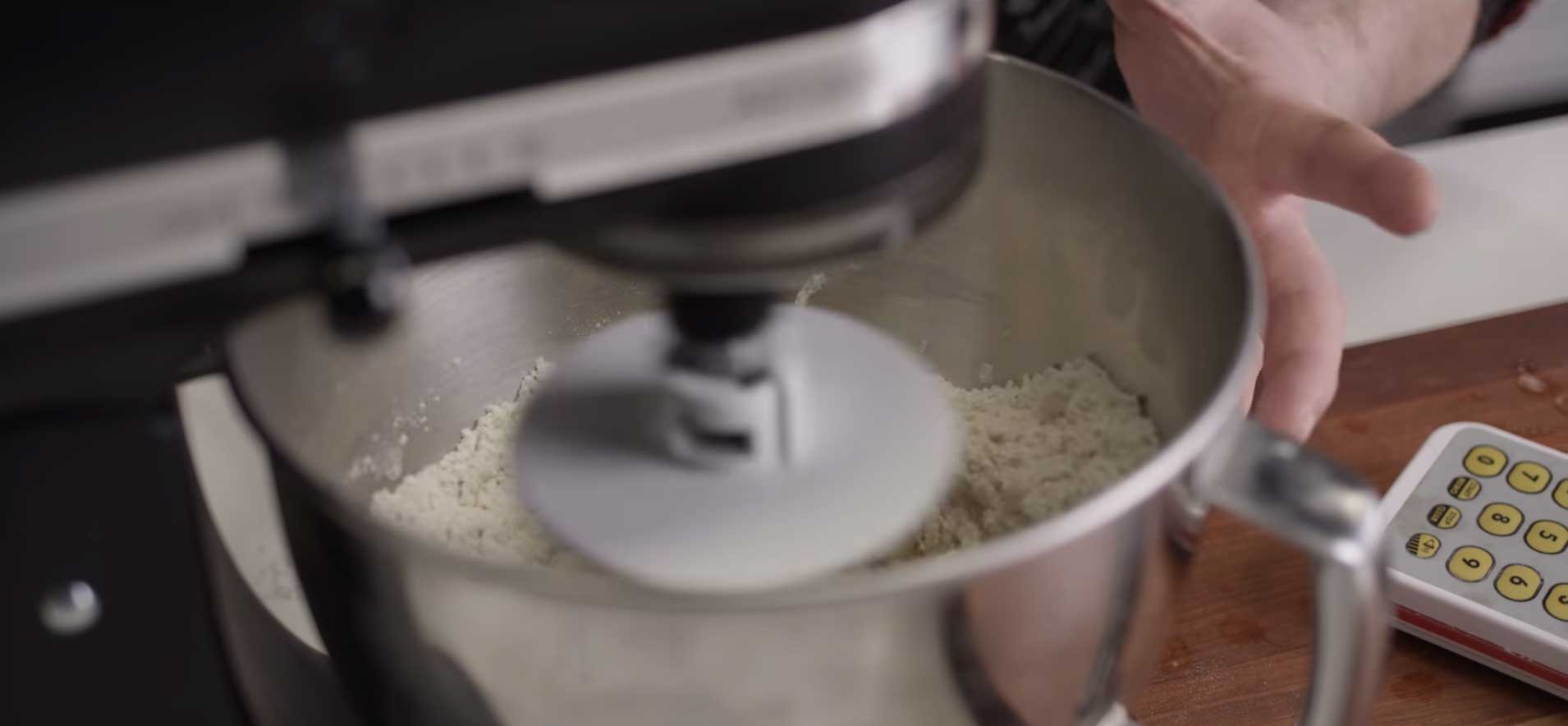
Once the dough has been mixed and formed into a smooth ball, transfer it to a clean bowl that has been lightly oiled to prevent sticking. Place the dough ball in the oiled bowl, then cover it tightly with plastic wrap to create a seal.
Allow the dough to rise in a warm, draft-free area until it has doubled in size. This rising process typically takes about 1 to 1.5 hours, but the exact time may vary depending on factors such as the temperature of the room and the activity of the yeast.
During this time, the yeast will continue to ferment and produce carbon dioxide, causing the dough to expand and become lighter and airy. Once the dough has doubled in size, it will be ready to be shaped into your desired pizza crust and baked to perfection.
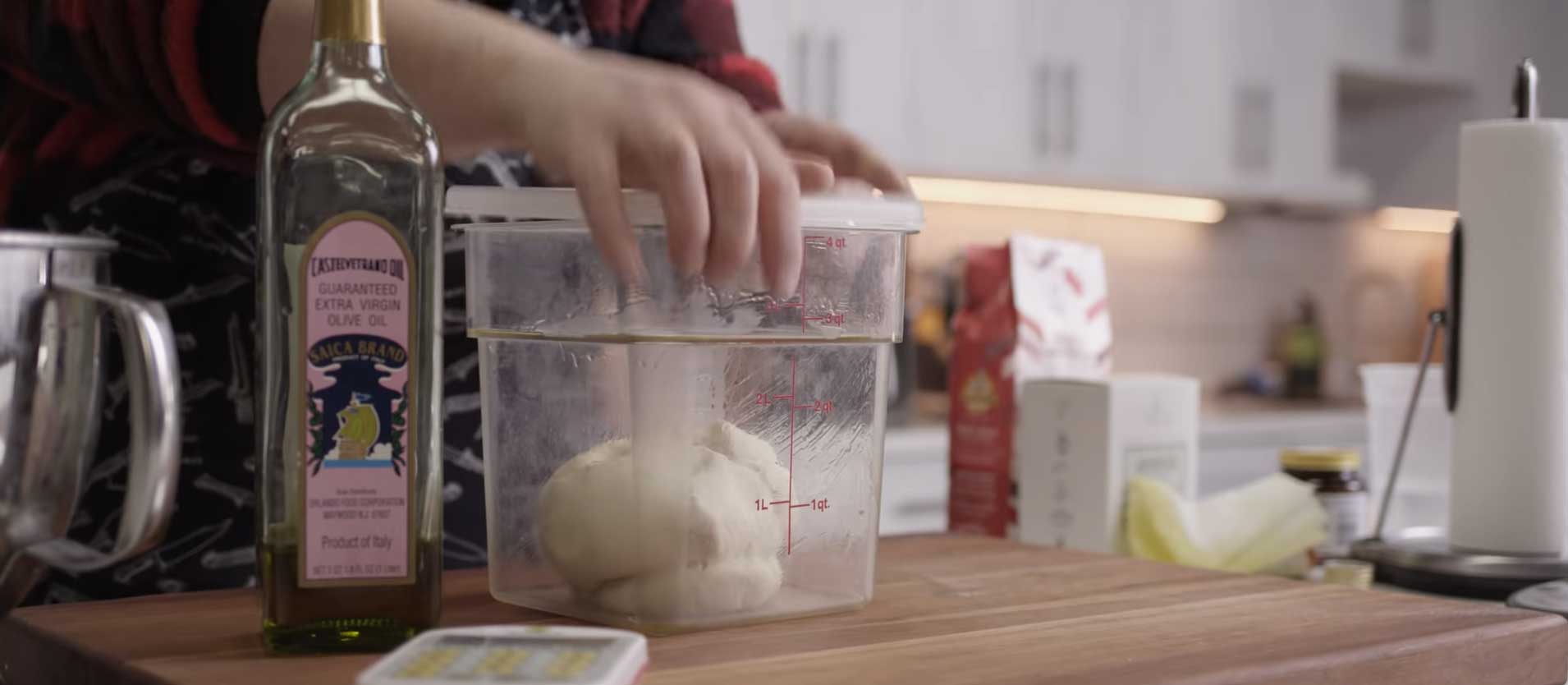
After the dough has doubled in size, gently turn it out onto a floured surface. Using a knife or dough scraper, divide the dough into two equal portions. Take each portion and shape it into a ball by tucking the edges underneath until a smooth surface is formed.
Place each dough ball into a separate oiled container to prevent sticking. Ensure that the containers are large enough to allow the dough balls to rise further without touching each other. Cover the containers tightly with plastic wrap or a kitchen towel to keep the dough from drying out.
Refrigerate the dough balls for at least half an hour before using them. Chilling the dough helps to relax the gluten and makes it easier to handle when shaping the pizza crust. Additionally, the cold fermentation process enhances the flavor and texture of the dough, resulting in a more delicious and authentic pizza crust.

On a floured work surface, gently place one of the chilled dough balls. Using your fingertips, begin pressing and stretching the dough outward from the center, working in a circular motion. Continue stretching the dough until it reaches the desired thickness, keeping in mind that thinner dough will result in a crispier crust.
Be careful not to tear the dough, but if any small tears occur, simply pinch them together to seal. Rotate the dough periodically to ensure even stretching and to achieve a round shape.
Once the crust is stretched to your liking, it's ready to be topped with your favorite sauce, cheese, and toppings before baking. Enjoy the process and have fun experimenting with different shapes and thicknesses to create your perfect pizza crust!
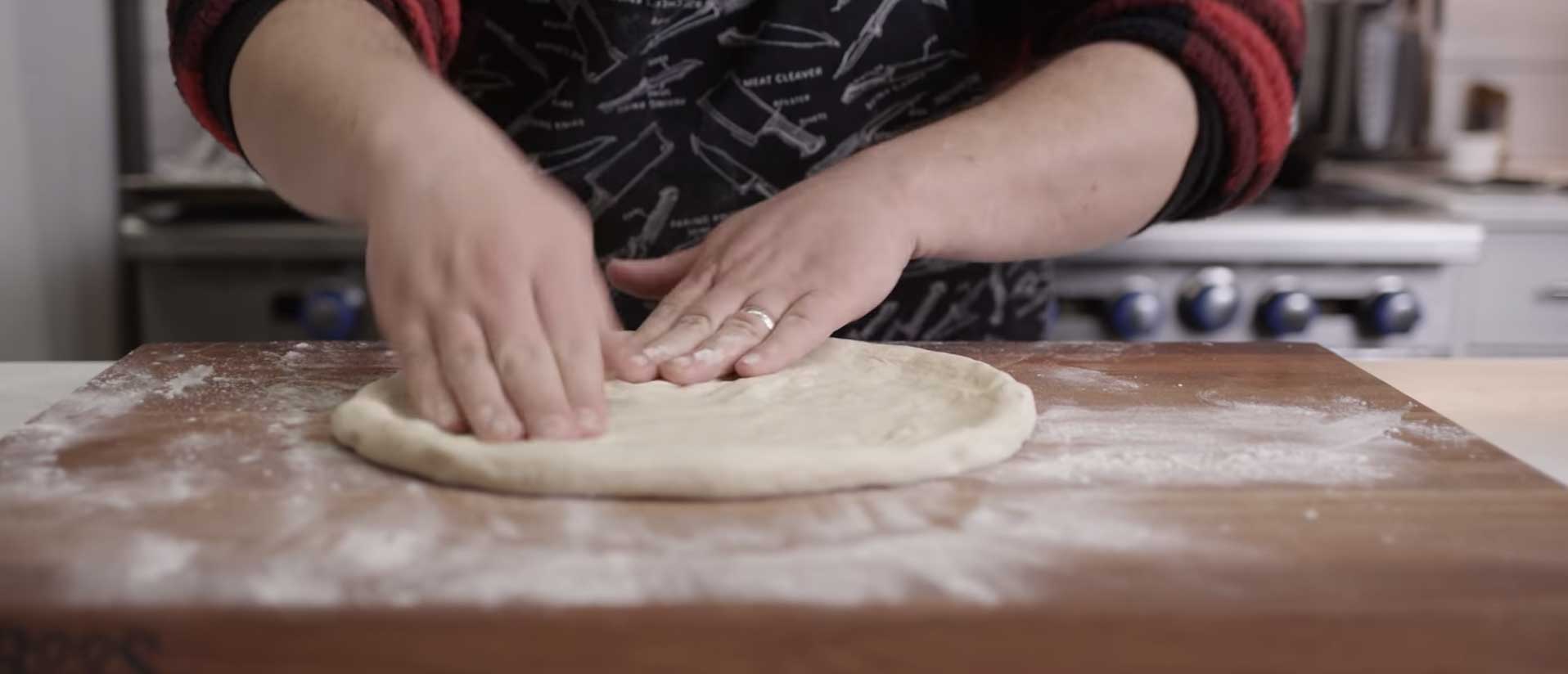

Nutrition
Nutrition
- Serving Size
- 3 oz
- per serving
- Calories
- 306
- Carbs
- 63.9 grams
- 23%
- Protein
- 8.9 grams
- Fat
- 1 grams
- 1%
- Sodium
- 649 milligrams
- 28%
- Fiber
- 2.4 grams
- 1%
- Sugar
- .2 grams